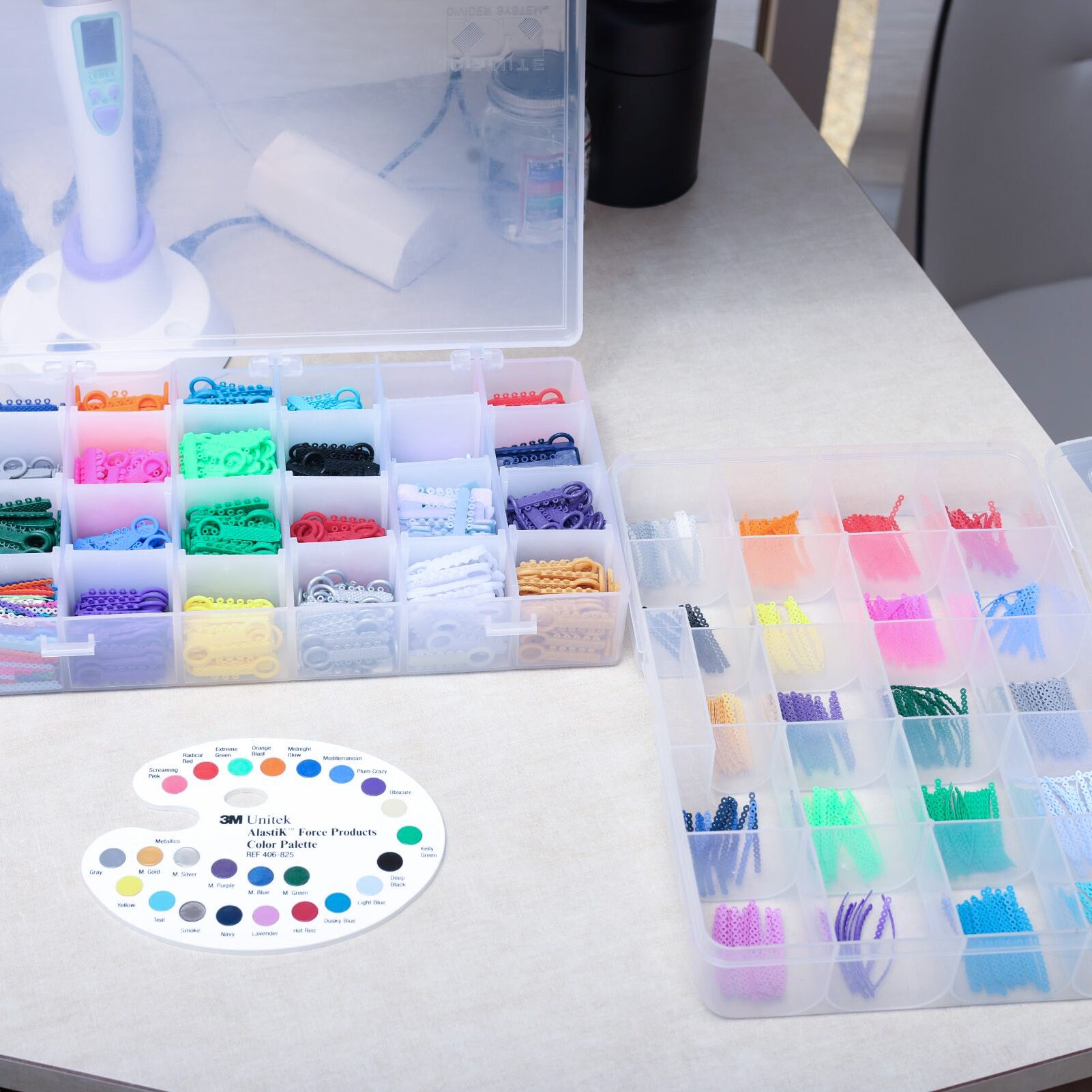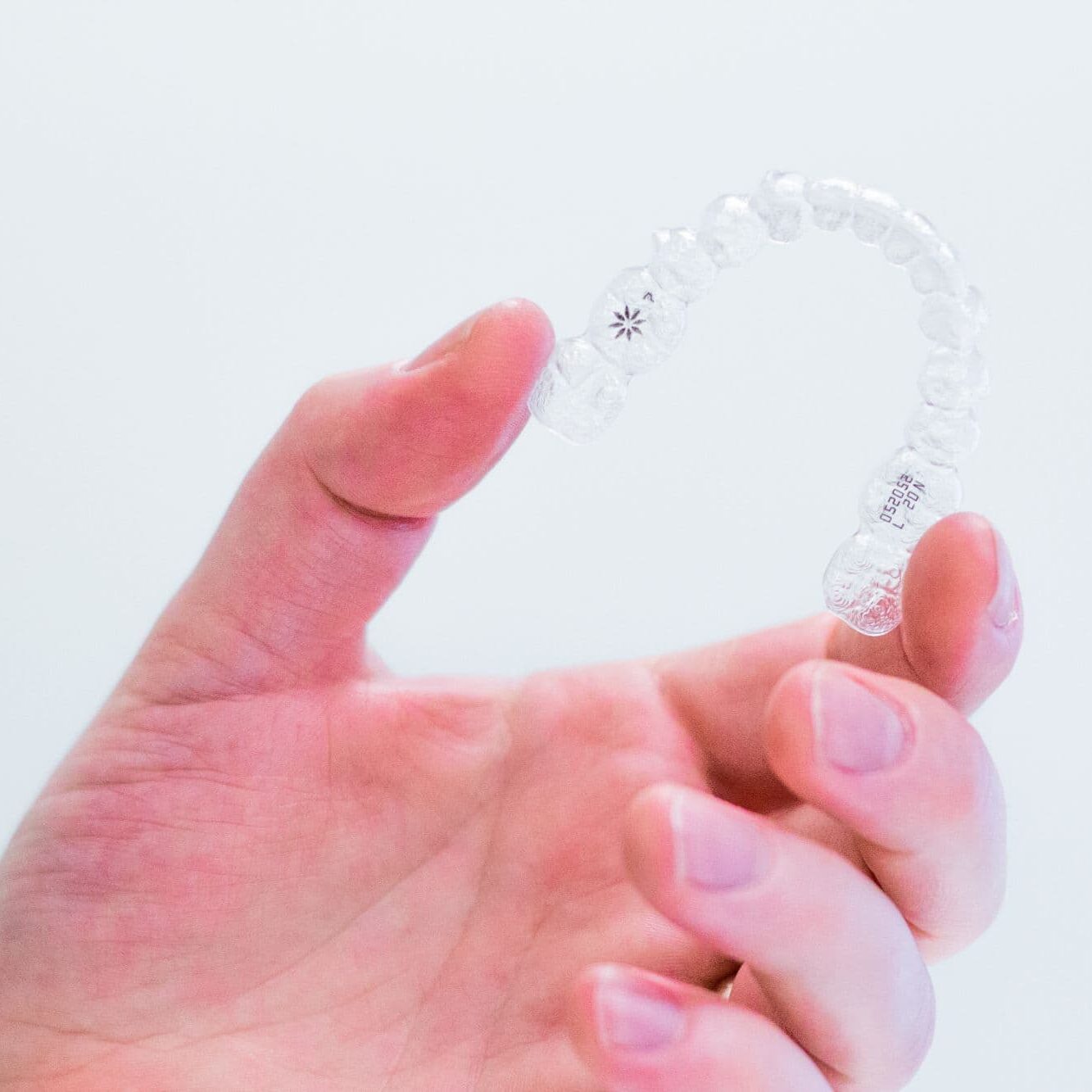Braces & Invisalign | Germantown & Collierville
Find the Best Fit for a Perfect Smile
You’ll love our treatment options at Saddle Creek Orthodontics. Dr. Kyle and Dr. John believe that everyone deserves a beautiful smile, so that’s why you can choose from state-of-the-art, comfortable, personalized treatments.
If you’re a mother looking for an affordable way to improve your child's appearance and self-confidence or an adult wondering if now is the right time to transform your smile, come learn about our unique treatment and financing options that can fit your family.

Invisalign
At Saddle Creek Orthodontics, you’ll love the amazing benefits of Invisalign, a modern solution that can give you a straighter smile without the hassle of traditional braces.
Learn MoreMetal Braces
Today’s metal braces are lighter and more comfortable than ever before while working even harder and more effectively at the same time.
Learn More

Clear Braces
Ceramic braces are a modern alternative to metal braces. They use brackets made of tooth-colored ceramic material that blends in with your teeth, making them much less noticeable.
Learn MoreOrtho for All Ages
Dr. Kyle and Dr. John believe everyone should have the chance to enjoy orthodontic care and a stunning, straight smile.
Ortho FAQs
Get answers to common orthodontic questions.
Ortho Tips
Dr. Kyle and Dr. John share some top tips to make the most of your time in braces.

Better Braces for Bigger Smiles
Dental technology evolves every year, and we stay at the forefront for you to make sure your treatment stays efficient, and comfortable and gives you the best result possible.
Dr. Kyle and Dr. John combine cutting-edge technology with their deep understanding of the movement and growth of teeth and jaws. This helps them successfully treat all kinds of dental issues, like:
- Crossbite
- Underbite
- Overbite
- Crowded teeth
- Gaps between the teeth
- Impacted teeth
- Protruding teeth

Absolutely Recommend!
Dr. Kyle and the entire staff are very patient and create a warm and friendly experience. I would absolutely recommend him to anyone who wants a better smile.
- Dustin

Top-Tier Orthodontist
My experience here at Saddle Creek Orthodontics was amazing. If you are looking for a top-tier orthodontist, look no further.
- Melkyeva

Amazing & Friendly
There is a reason why Dr. Kyle Fagala and the entire Saddle Creek Ortho team only has 5 star ratings and I experienced it for myself throughout the process!
- Teresa

I Love My Smile Now
Just finished my Invisalign treatment with Dr. Kyle. I wore traditional braces for four years previously, but needed a tune up after not wearing my retainer properly. I was blown away by Dr. Kyle and his staff. Their attention to detail was incredible, and they made me feel like family with each visit and call to the office. I love my smile now.
- Caitlin

Highly Recommended!
We have had an AWESOME experience with Saddle Creek Ortho. the staff is always so friendly and willing to help with our family's hectice school/sports schedule. Highly recommended!
- Jennifer

Staff is So Friendly
Loved my experience with Saddle Creek Orthodontics! The entire staff is so friendly. Every appointment was quick and painless. Plus, now I have the smile I always wanted. Highly recommended!
- Gail

Thanks SCO!
Dr. Kyle and his amazing staff have walked my two daughters through to a brand new smile. We would recommend (and have done so) this group whole heartedly! We have been with them for about 8 years between my two girls and we have NEVER experienced anything negative. Thanks SCO!
- Lawrence

Great Customer Service
Absolutely amazing experience with both offices! Great customer service and cute offices. Thank you for a smooth braces treatment and a beautiful smile.
- Lawrence

You've Got Options
Most patients at Saddle Creek Orthodontics, choose metal braces to straighten their teeth. But don't worry, there are other options too!
After your first free consultation, Dr. Kyle or Dr. John will chat with you about which treatment is best for your unique needs and smile goals. Please don't hesitate to ask questions! We're here to help you get the smile you want.
Fixed Vs. Removable Appliances
In terms of orthodontic treatment, we usually use either fixed or removable appliances. Why does that matter?
Fixed appliances like braces attach to your teeth with special cement and stay there until you finish your treatment. On the other hand, you’d wear a removable appliance like Invisalign aligners for about 20-22 hours per day, but you can take them out whenever you need.
Invisalign aligners work best for mild to moderate orthodontic problems, while you’d need fixed appliances for more serious and extensive treatment.
